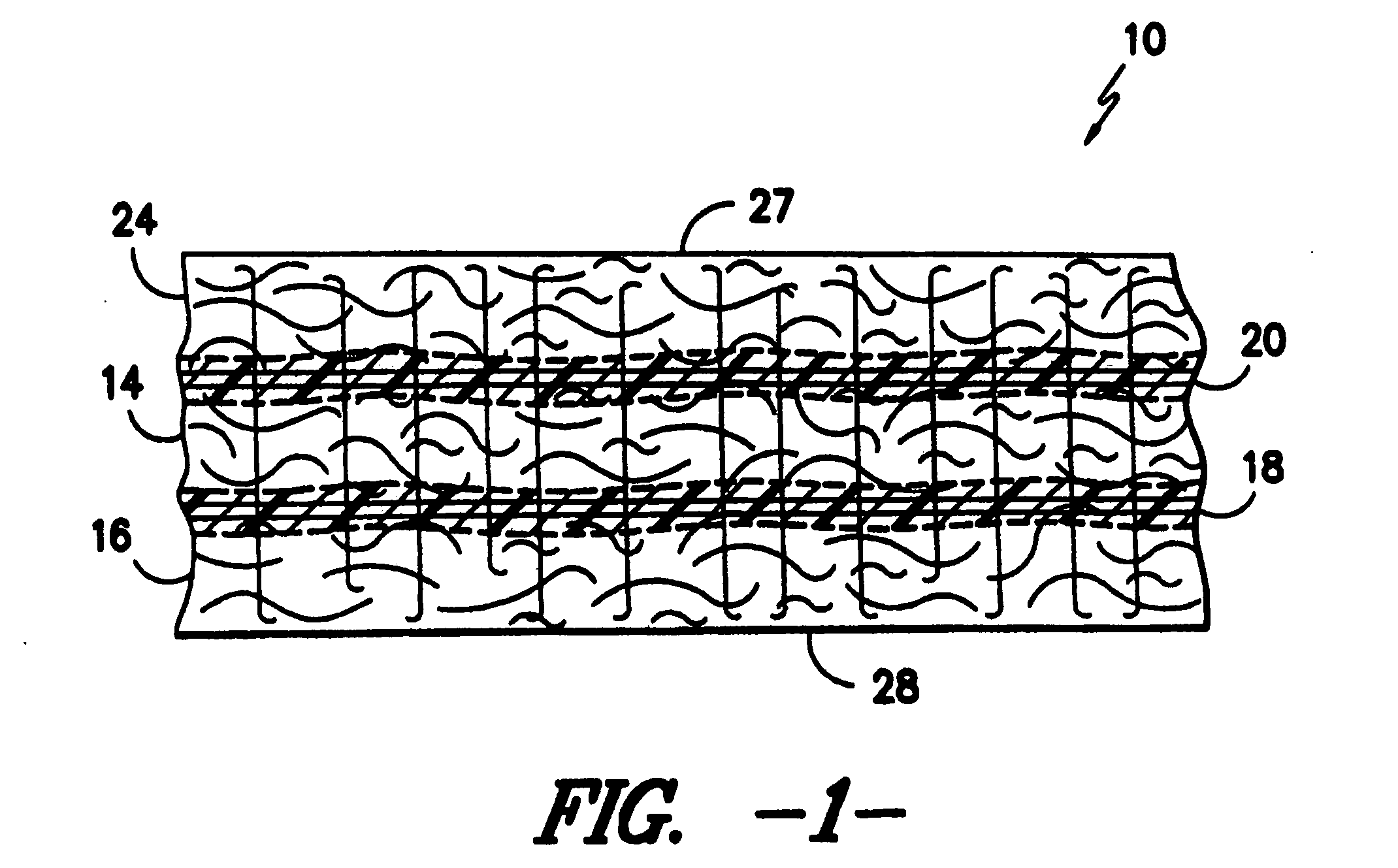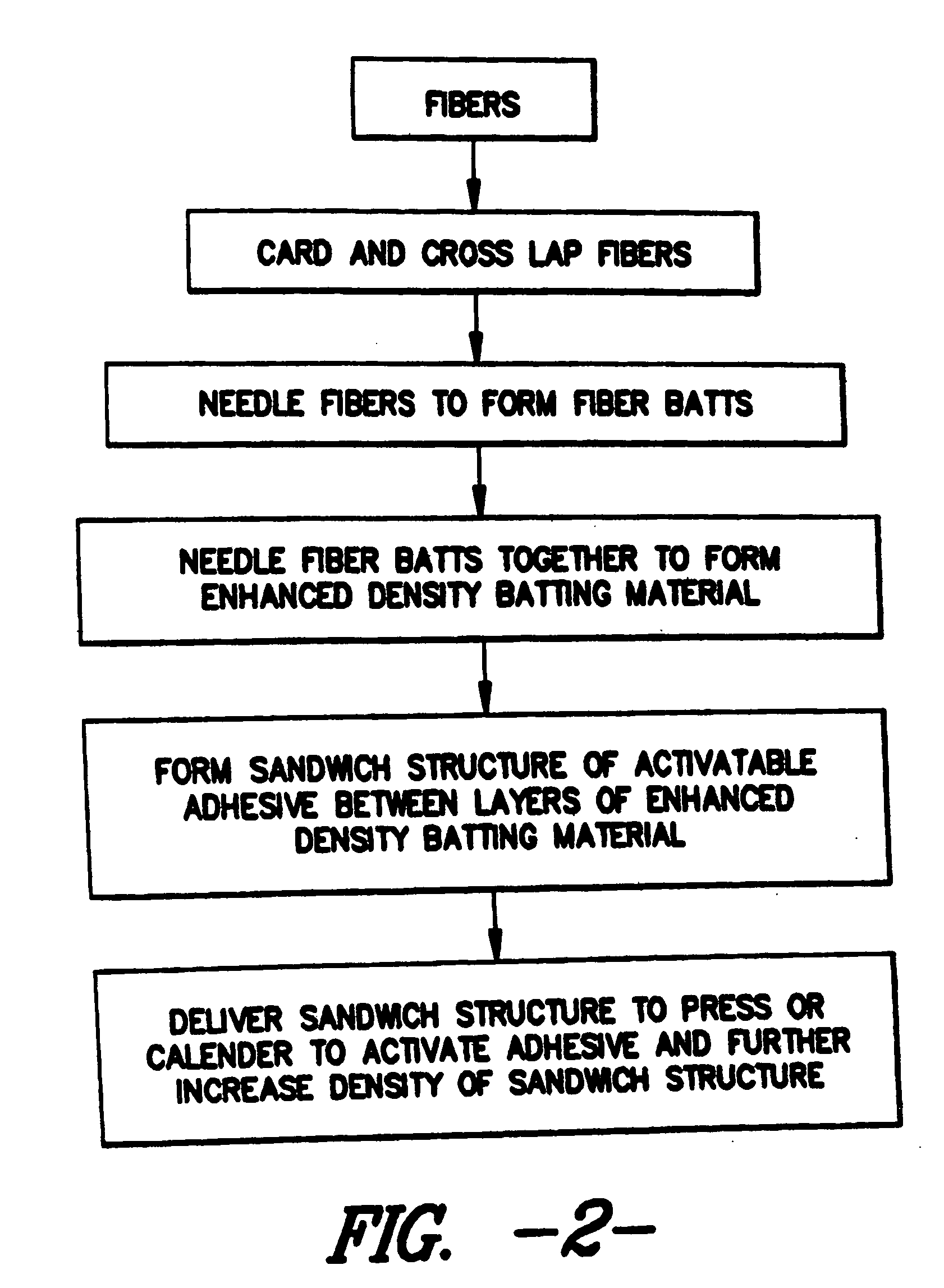Nonwoven laminate structure
a laminate structure and nonwoven technology, applied in the field of nonwoven structures, can solve the problems of increasing the cost of production, increasing the density and structural integrity of the batt, and generally difficult to achieve the production of articles exhibiting both substantial thickness and high density in an efficient manner, and achieves the effect of high efficiency and cost-effectiveness
- Summary
- Abstract
- Description
- Claims
- Application Information
AI Technical Summary
Benefits of technology
Problems solved by technology
Method used
Image
Examples
example
[0042] A felt structure was formed of 3 denier 76.2 mm polyester staple fiber by carding, cross lapping and needling the fiber to form preliminary fiber batts having a thickness of about 5.2 mm and a density of about 0.071 grams per cubic centimeter. Four of such preliminary fiber batts were thereafter combined and densified in a three stage needling loom thereby forming an enhanced density fiber batt having a thickness of about 5.7 mm and a density of about 0.238 grams per cubic centimeter. Three of such enhanced density fiber batts were thereafter passed through a single stage needling loom in sandwiching relation to two layers of a scrim fabric of meltable polyamide adhesive having an area density of about 27.1 grams per square meter thereby binding the scrim fabric between the fiber batts such that fibers from the fiber batts and the scrim fabric are mechanically entangled. The resulting sandwich structure had a thickness of about 15 mm and a density of about 0.27 grams per cubi...
PUM
| Property | Measurement | Unit |
|---|---|---|
| thickness | aaaaa | aaaaa |
| density | aaaaa | aaaaa |
| length | aaaaa | aaaaa |
Abstract
Description
Claims
Application Information
 Login to View More
Login to View More - R&D
- Intellectual Property
- Life Sciences
- Materials
- Tech Scout
- Unparalleled Data Quality
- Higher Quality Content
- 60% Fewer Hallucinations
Browse by: Latest US Patents, China's latest patents, Technical Efficacy Thesaurus, Application Domain, Technology Topic, Popular Technical Reports.
© 2025 PatSnap. All rights reserved.Legal|Privacy policy|Modern Slavery Act Transparency Statement|Sitemap|About US| Contact US: help@patsnap.com



